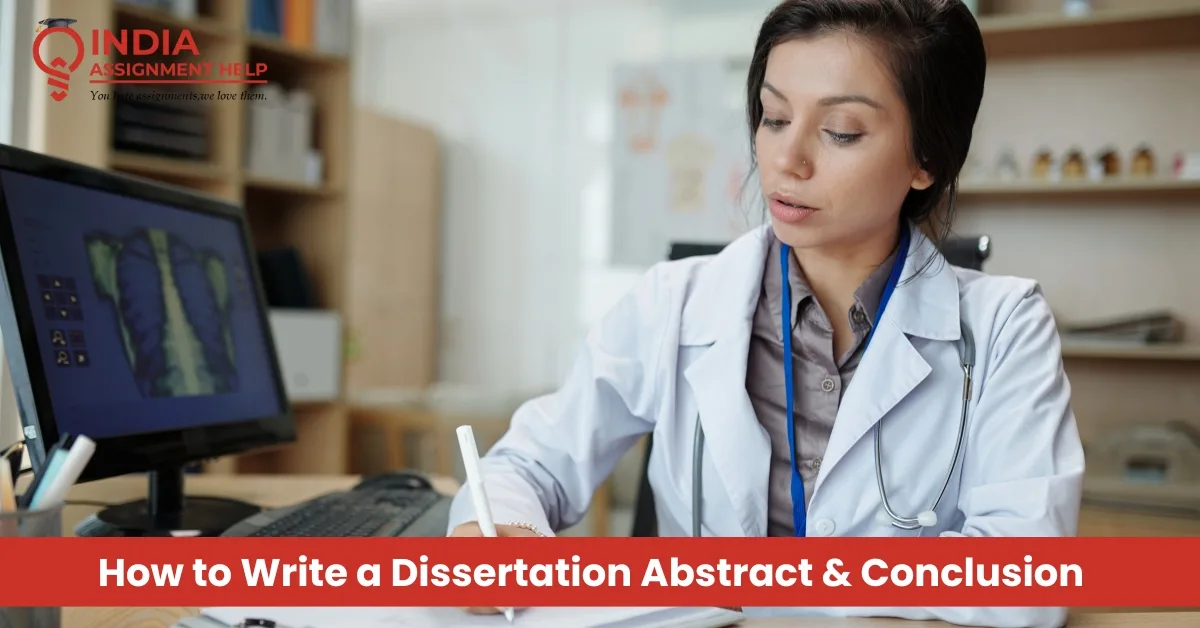How to Write a Powerful Abstract and Conclusion for Academic Papers

Writing a dissertation abstract and a well-structured conclusion are two of the most important parts of any academic paper. These sections are often the first and last parts that readers, including professors, examiners, and research reviewers, will see. For students in Germany, where academic standards are high and writing clarity is essential, mastering these sections is key to achieving better grades and strong academic impressions.
This blog will explain why the abstract and conclusion matter, how to write them effectively, and what mistakes to avoid. It will also include examples to make the concept easier to understand. Whether you are working on your dissertation, thesis, or research paper, these academic writing tips will help you write with confidence and clarity.
Why the Abstract and Conclusion Matter
The dissertation abstract plays a vital role in summarizing your research. It gives readers a quick understanding of your topic, research questions, methods, and key findings. Many universities in Germany require students to submit an abstract separately before the complete dissertation is reviewed. Hence, crafting a clear and powerful dissertation abstract German style can determine whether your paper attracts academic interest.
Similarly, the conclusion helps to bring your research to a meaningful end. It summarizes the major points and shows how your research contributes to your field of study. In thesis writing, this is known as thesis conclusion writing — a skill that requires both critical thinking and precision.
A well-written abstract and conclusion can:
- Help readers quickly understand the purpose and outcome of your study.
- Show that you can think critically about your topic.
- Improve your chances of publication and recognition in academic journals.
- Leave a lasting impression of professionalism and clarity.
If you need additional guidance, Dissertation Writing Services offered by platforms like India Assignment Help can assist you in preparing these sections perfectly.
Components of a Strong Abstract
A dissertation abstract usually contains four main components. Each component plays a specific role in summarizing your research work effectively.
Introduction or Background
Begin with a brief introduction to your research topic. Explain what motivated your study and why it matters. This helps the reader understand the context of your research.
Example: “Digital education tools have transformed modern learning systems, yet their impact on student performance remains underexplored.”
Purpose and Research Questions
Clarify the main aim of your study and outline the research questions or hypotheses.
Example: “The purpose of this study is to evaluate how digital learning platforms influence students’ engagement and academic performance.”
Methodology
Mention the research design, participants, and techniques used for data collection and analysis.
Example: “This study used a mixed-methods approach, combining surveys and interviews from 200 university students in Germany.”
Results and Conclusions
Present key findings and summarize what you discovered. Avoid going into too much detail; just highlight the most significant results.
Example: “The findings show that digital learning tools improved engagement but did not significantly enhance overall academic performance.”
By covering these four parts, your dissertation abstract becomes an informative, concise summary that clearly communicates your research’s value.
If you are writing a research paper abstract, the same structure applies. However, research papers often require shorter abstracts (around 150–250 words), while dissertations may allow longer summaries.
Students in Germany often struggle with the language and formatting requirements for abstracts. To avoid such challenges, consider professional Thesis Help from academic experts who specialize in dissertation abstract guidelines.
What a Conclusion Should (and Shouldn’t) Include
The conclusion is more than just a summary. It is your final opportunity to convince readers that your research was meaningful and worth reading. Effective thesis conclusion writing should include:
- A Summary of Key Points: Briefly restate the main findings without repeating the same sentences from your body paragraphs.
- Interpretation of Results: Discuss what your results mean in relation to your research question or hypothesis.
- Implications and Recommendations: Explain how your findings can be used in real-life contexts or for future research.
- Final Reflection: End with a thought-provoking statement that shows your understanding of the topic’s broader importance.
Example:
“This study highlights the growing need for personalized digital learning tools. Future research could focus on integrating AI technologies to improve engagement and academic outcomes.”
What your conclusion shouldn’t include:
- New information or data not discussed earlier.
- Personal opinions are not supported by your research.
- Overly emotional or vague statements.
Many students make the mistake of copying parts of their introduction or discussion sections into the conclusion. Instead, focus on synthesis, connecting ideas, not repeating them.
When in doubt, professional Dissertation Writing Services like those offered by India Assignment Help can review your final section to ensure it meets academic standards.
Common Mistakes to Avoid
Even strong researchers can make small but costly errors in their dissertation abstract or conclusion. Below are some common mistakes and how to avoid them:
Being Too Vague: Avoid general statements like “This study explores important topics in education.” Instead, specify what your study explores and why.
Exceeding the Word Limit: Universities in Germany often set strict word limits for abstracts (usually 250–350 words). A longer abstract can make your work look unfocused.
Including Citations in the Abstract: The abstract should summarize your work, not refer to external sources.
Lack of Clarity: Use simple and direct language. Even technical topics should be explained in a way that non-specialist readers can understand.
Repeating the Introduction in the Conclusion: Avoid rewriting your introduction in the final section. Instead, interpret your findings and explain their importance.
Ignoring Formatting Guidelines: Every institution in Germany follows different formatting rules for dissertation abstract submissions. Always check your university’s template and follow it carefully.
By avoiding these mistakes, your abstract and conclusion will appear more professional and academically sound.
Example of a Strong Abstract and Conclusion
Example Abstract:
“The growing use of digital learning platforms has changed how university students in Germany approach education. This study investigates the relationship between digital tools and academic engagement. Using a mixed-method approach, data were collected from 200 students across five universities. Results show that digital tools improved student participation and time management but had limited effects on exam performance. The findings suggest that digital education can enhance learning experiences if combined with personalized support systems.”
This dissertation abstract includes all necessary elements: background, purpose, methodology, and findings within a concise and clear format.
Example Conclusion:
“This research concludes that while digital tools promote active engagement, they are not sufficient to improve performance without individualized learning support. The findings encourage educators in Germany to design balanced teaching methods that combine technology with personalized mentorship. Future studies should explore long-term impacts of AI-based platforms on student success.”
This example of thesis conclusion writing effectively summarizes findings, interprets results, and suggests practical implications, making it ideal for dissertations and research paper abstract preparation.
Final Thoughts
Writing a strong dissertation abstract and conclusion is not just about summarizing your research; it’s about showcasing your understanding and contribution to your field. For students in Germany, academic writing can be especially challenging due to specific institutional standards.
By following structured academic writing tips, focusing on clarity, and avoiding common mistakes, you can make your work stand out. Remember, these sections are your research’s “first impression” and “final word.”
If you ever need guidance, expert services like Dissertation Help from India Assignment Help can ensure your abstract and conclusion meet professional and academic expectations. With expert support, your writing can reflect both quality and originality, helping you achieve the success you deserve.





